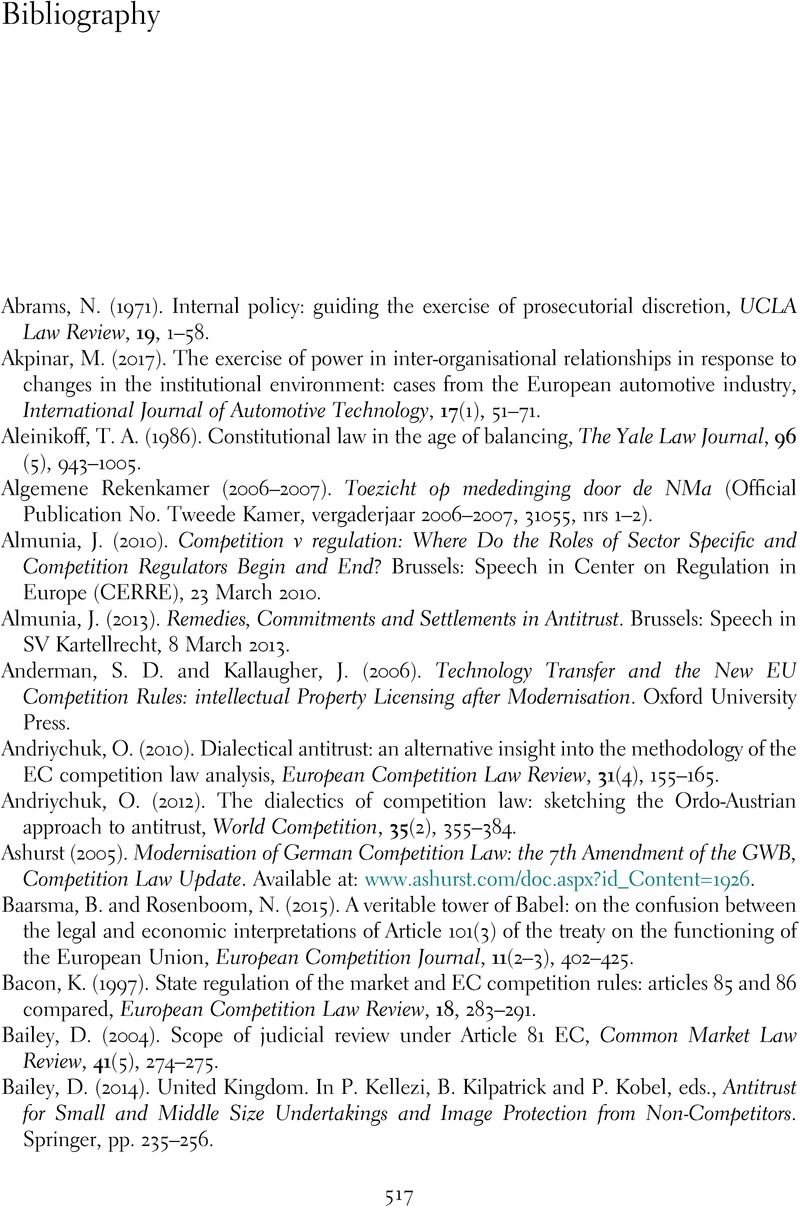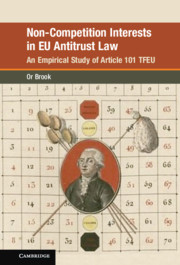Book contents
- Non-Competition Interests in EU Antitrust Law
- Global Competition Law and Economics Policy
- Non-Competition Interests in EU Antitrust Law
- Copyright page
- Contents
- Figures
- Tables
- Acknowledgements
- Definitions
- Abbreviations
- 1 Introduction and Methodology
- 2 History of Article 101 TFEU Balancing
- 3 Article 101(3) TFEU
- 4 Block Exemption Regulations
- 5 Article 101(1) TFEU
- 6 National Balancing Tools
- 7 Enforcement Discretion
- 8 Conclusion
- Book part
- Laws, Regulations, Reports, and Policy Papers
- Case Law
- Bibliography
- Index
- References
Bibliography
Published online by Cambridge University Press: 06 June 2022
- Non-Competition Interests in EU Antitrust Law
- Global Competition Law and Economics Policy
- Non-Competition Interests in EU Antitrust Law
- Copyright page
- Contents
- Figures
- Tables
- Acknowledgements
- Definitions
- Abbreviations
- 1 Introduction and Methodology
- 2 History of Article 101 TFEU Balancing
- 3 Article 101(3) TFEU
- 4 Block Exemption Regulations
- 5 Article 101(1) TFEU
- 6 National Balancing Tools
- 7 Enforcement Discretion
- 8 Conclusion
- Book part
- Laws, Regulations, Reports, and Policy Papers
- Case Law
- Bibliography
- Index
- References
Summary

- Type
- Chapter
- Information
- Non-Competition Interests in EU Antitrust LawAn Empirical Study of Article 101 TFEU, pp. 517 - 540Publisher: Cambridge University PressPrint publication year: 2022

